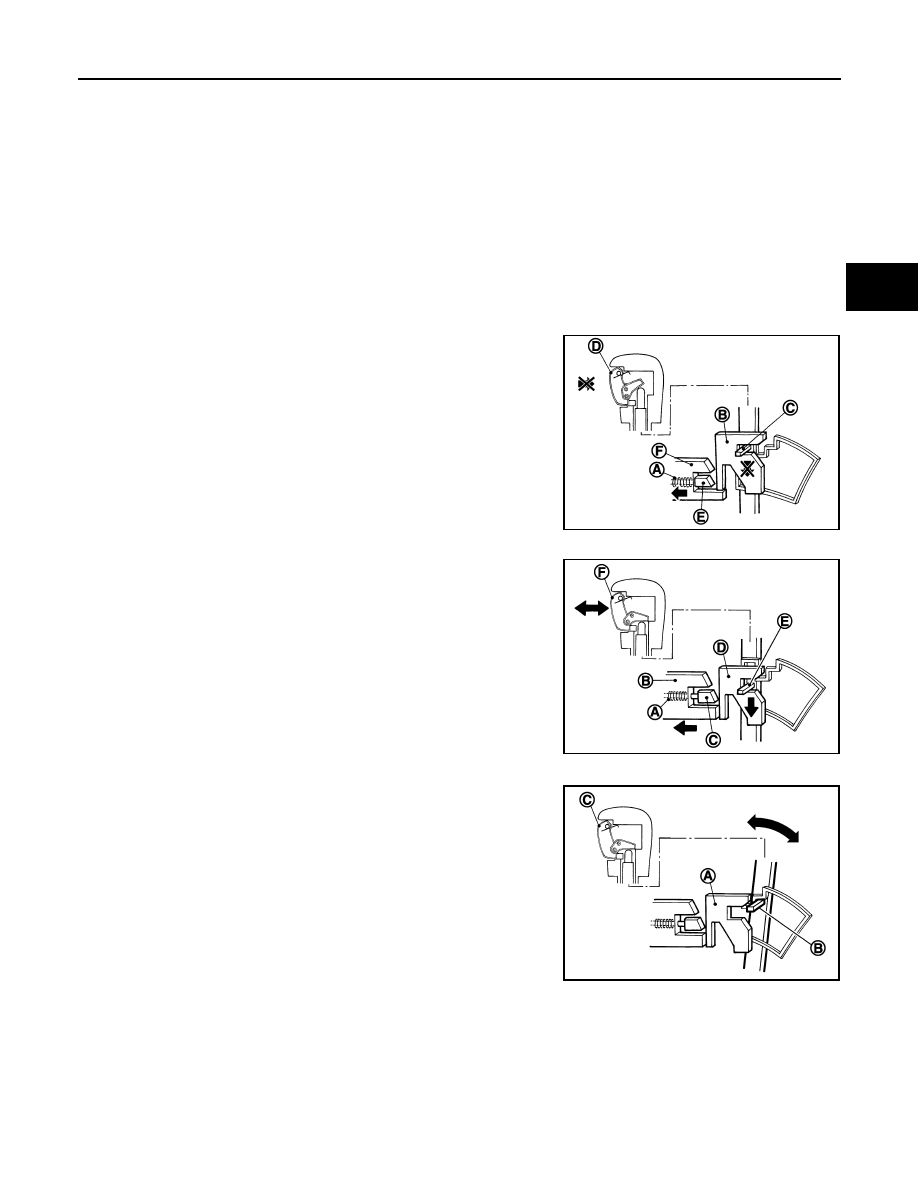Content .. 1811 1812 1813 1814 ..
Infiniti FX35, FX50 (S51). Manual - part 1813

SHIFT LOCK SYSTEM
TM-59
< SYSTEM DESCRIPTION >
[7AT: RE7R01A (VQ35HR)]
C
E
F
G
H
I
J
K
L
M
A
B
TM
N
O
P
SHIFT LOCK SYSTEM
System Description
INFOID:0000000005250019
• Shift lock prevents an unintentional start of the vehicle that may be caused by an incorrect operation while
selector lever is in the “P” position.
• Selector lever can be shifted from the “P” position to another position when the following conditions are sat-
isfied.
- Ignition switch ON
- Stop lamp switch is ON (brake pedal is depressed)
- Selector lever knob button is pressed
SHIFT LOCK OPERATION AT “P” POSITION
When Brake Pedal Is Not Depressed (No Shift Operation Allowed)
The shift lock solenoid (A) inside the shift lock unit is not energized if
the brake pedal is not depressed while the ignition switch is ON.
The lock plate (B) lowers according to the downward movement of
the position pin (C) when the selector button (D) is pressed, and
presses only slider B (E) into the shift lock unit. Slider A (F) located
below the lock plate prevents the downward movement of the lock
plate with the spring force. The selector lever cannot be shifted from
the “P” position for this reason.
However, slider A is forcibly pressed into the shift lock unit, allowing
the selector lever to shift if the shift lock release button is pressed.
When Brake Pedal Is Depressed (Shift Operation Allowed)
The shift lock solenoid (A) inside the shift lock unit is energized and
the relative positions of sliders A (B) and B (C) are maintained when
the brake pedal is depressed while the ignition switch is ON.
The lock plate (D) lowers according to the downward movement of
the position pin (E), thrusting away sliders A and B, when the selec-
tor button (F) is pressed.
The position pin lowers to the position that allows shift operation for
this reason. As a result, the selector lever can be shifted out of the P
position.
OPERATION AT OTHER THAN “P” POSITION
The shift lock function will not operate at any position other than “P”
because the lock plate (A) is only set for the “P” position. Accord-
ingly, the selector lever can be shifted to any position regardless of
the brake operation.
The position pin (B) enters the “P” position thrusting away the lock
plate when the selector lever is shifted to the “P” position. Then, the
shift mechanism is locked when the selector button (C) is released.
“P” POSITION RETAINING MECHANISM (IGNITION SWITCH LOCK)
When ignition switch is not in the ON position, power is not applied to the shift lock solenoid in the shift lock
unit. This causes shift lock state, and then “P” position is retained.
When an actuating system in the shift lock unit has a malfunction, selector lever is unable to operate from the
“P” position even when pressing the brake pedal with the ignition switch ON. However, when pressing the shift
lock release button, slider A is forcibly pressed into the shift lock unit. This allows shift lock to be released and
selector lever enables the select operation from the “P” position.
CAUTION:
JSDIA0119ZZ
JSDIA0120ZZ
JSDIA0121ZZ